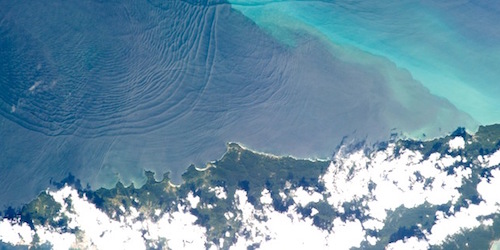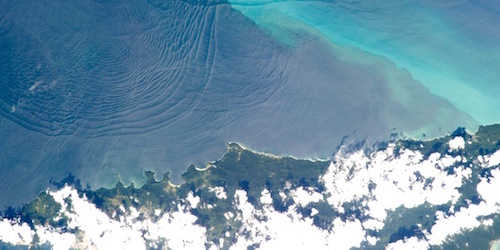Internal Waves Take the Staircase Down
Internal waves within the ocean, which form between water masses of different density, have an influence on ocean and climate dynamics. Understanding how far these waves travel vertically downward through “density staircases” of water, such as those found in the Arctic Ocean, would help researchers figure out whether they have a role in ice melting: if the waves can descend such staircases, they could drive warmer water to the surface and accelerate the melting. Using analytical and numerical tools, Bruce Sutherland from the University of Alberta, Canada, has now examined internal-wave transmission through an Arctic-like density staircase.
Theoretical studies of internal-wave propagation down through multiple density layers of water generally involve only a few layers. Sutherland investigated propagation across an arbitrary number of layers separated by sharp jumps in density. This is a more realistic representation of the Arctic density staircases, which are characterized by several jumps in ocean temperature and salinity. He found that wave transmission depends on the horizontal wavelength of the waves relative to the total depth of the staircase. Waves of large horizontal wavelength (much larger than the staircase depth) such as those induced by storms can travel through the entire staircase, whereas small-wavelength waves such as those generated by squalls cannot. The results suggest that large-scale storms striking an Arctic Ocean with decreasing ice cover can transmit internal waves to depth. These waves could break and cause fluid mixing that would eventually bring warm and salty fluid to the surface, enhancing the melting of what ice remains.
This research is published in Physical Review Fluids.
–Ana Lopes
Ana Lopes is a Senior Editor of Physics.





